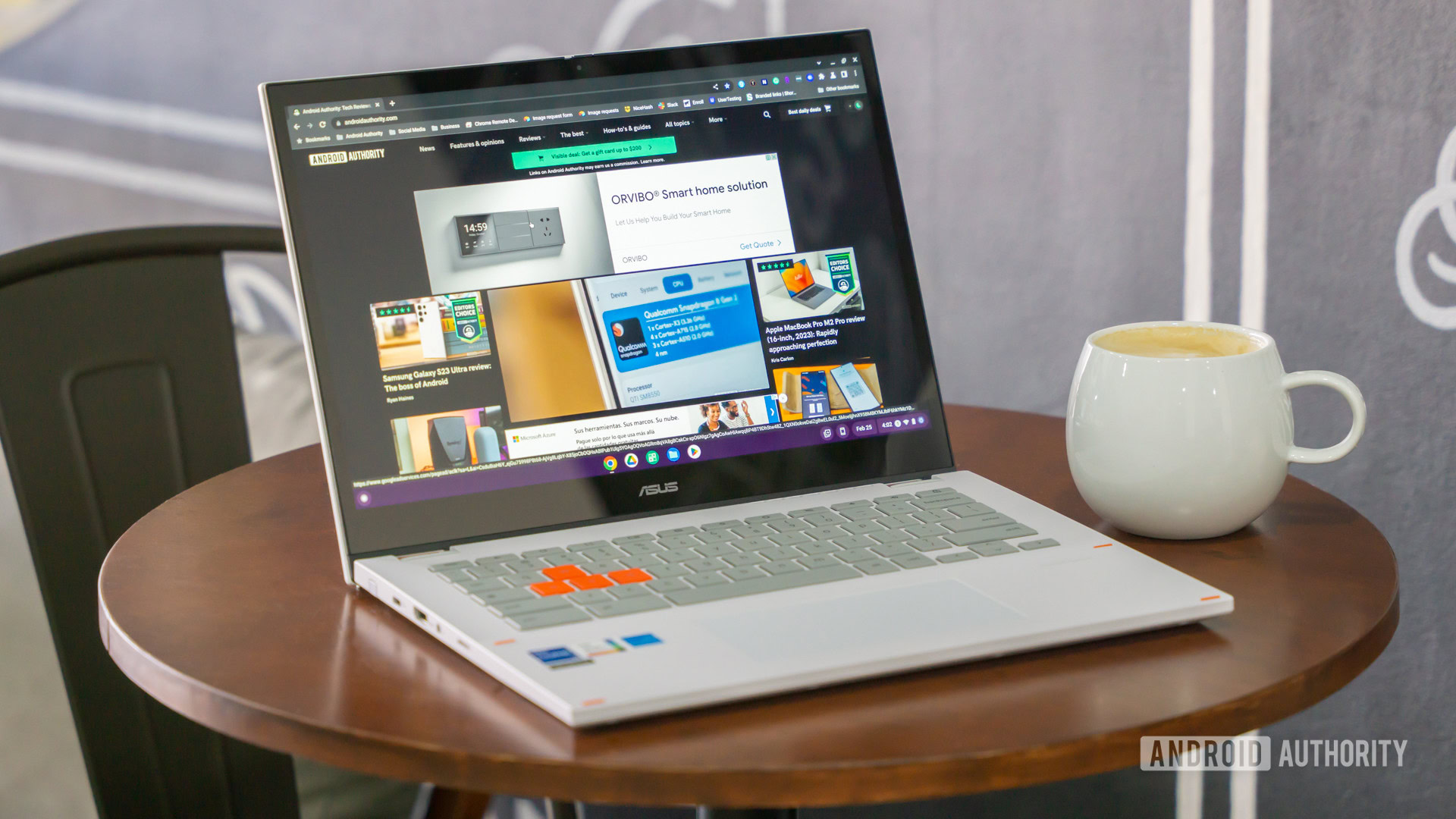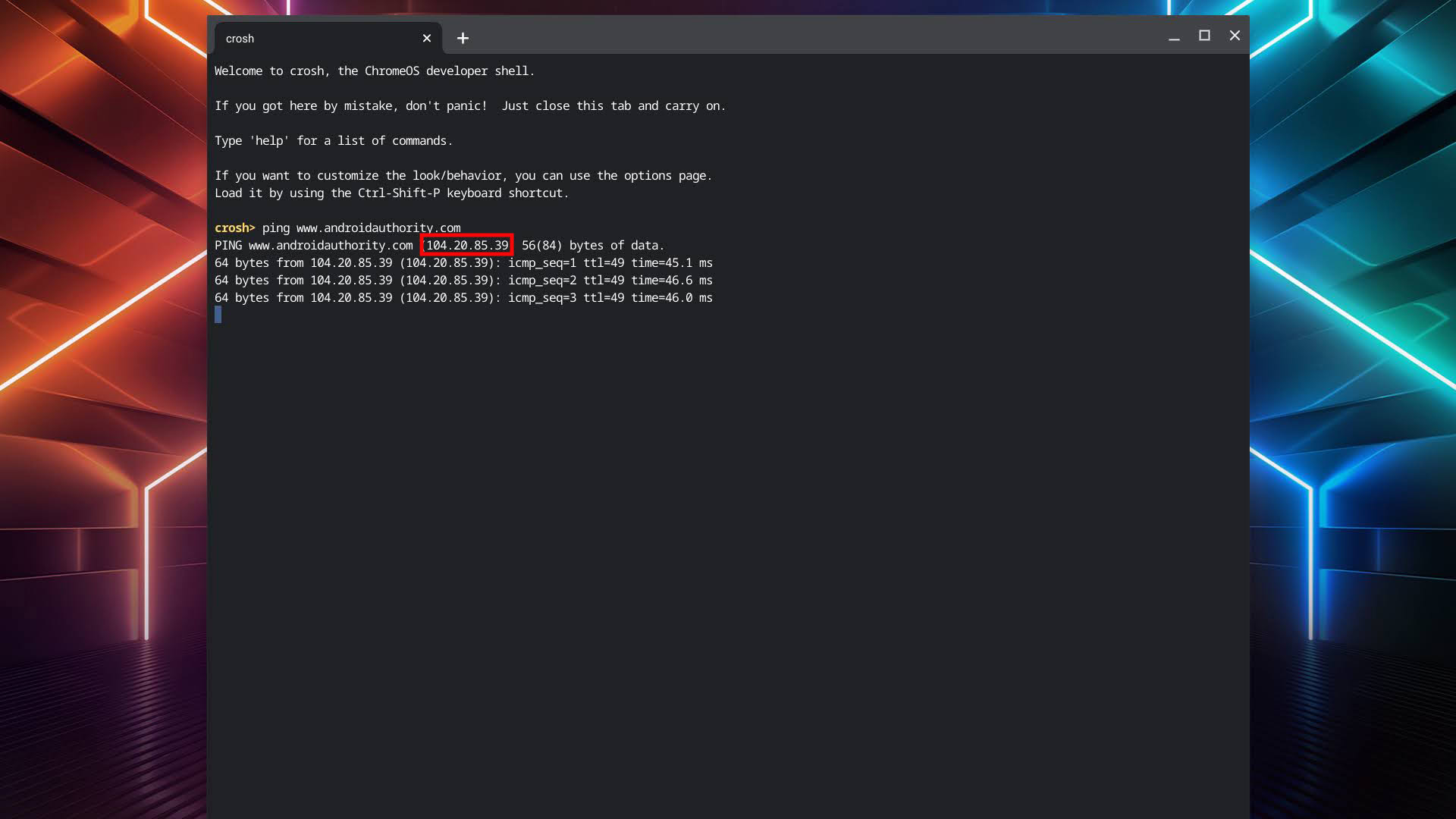Affiliate links on Android Authority may earn us a commission. Learn more.
How to unblock websites on school Chromebook
Published onJanuary 27, 2025
Chromebooks are great for doing homework and other school tasks, but they can be quite limiting for anything else. Schools tend to block many websites, limiting your research and preventing you from accessing important information. If you want to free yourself from these academic shackles, today we’ll show you how to unblock websites on school Chromebook computers.
QUICK ANSWER
There are multiple ways to unblock websites on school Chromebook devices. You can try using a VPN, connecting to a proxy server, changing the site permissions, and accessing websites using the IP address instead of the domain. There are some other more unconventional ways to accomplish this, too. You can use Google Translate, try to access the mobile version of the site, or use your a mobile hotspot connection to access the internet.
JUMP TO KEY SECTIONS
Editor’s note: We used an ASUS Chromebook Vibe CX34 Flip running Chrome OS version 120.0.6099.235. Some steps may be a bit different depending on your hardware and software version.
How to unblock websites on a school Chromebook

You can try many methods to unblock websites on school Chromebook computers. Your mileage may vary depending on how your school has set up its security measures, though. Some schools block websites at a device level. Others use DNS filtering to limit website access at the network level. In any case, we’ve provided solutions for both types of security measures. Give them a try until one of them works.
Unblock websites on school Chromebook using a VPN
A Virtual Private Network works as an intermediary between your device and the internet. It routes internet data through another server, which can keep your internet traffic private and unblock websites on school Chromebook devices.
You can use a VPN on Chromebook devices using multiple methods. First, you must have access to a VPN. Look through our list of free VPN options to find some good options.
Once your VPN service is ready, it’s time to set it up on the Chromebook. Most of these services have apps available, making the setup process pretty self-explanatory. If you have to set it up manually, follow the steps below.
How to add a VPN to a Chromebook:
- Launch the Settings app.
- Go into Network.
- Click on Add connection.
- Select Add built-in VPN.
- Get the VPN information from the service provider and input it here.
- Click on Connect when ready.
Use a proxy server to unblock websites on school Chromebook
Proxy servers work much like VPNs, the only difference being that traffic isn’t encrypted with proxy servers.
Similarly to VPNs, you will need to find a proxy server provider first. We don’t have a list of the best proxy server providers because we believe using a VPN is better, as it is inherently more secure and offers the same benefits. We like SmartProxy, but there are plenty of other options just a Google search away.
Once you’ve chosen and purchased your proxy server access, follow the steps below to set it up.
How to set up a proxy server on a Chromebook:
- Launch the Settings app.
- Go into the Network tab.
- Select the Wi-Fi option.
- Click on the Wi-Fi network you’re connected to.
- Scroll to the bottom, where you’ll find the Proxy section. Expand it.
- Toggle on Allow proxies for shared networks. Hit Confirm.
- Next to Connection type, click on the dropdown menu and select Manual proxy configuration.
- Enter all the necessary data and hit Save.
Change the Chromebook’s site permissions
This method is a bit of a stretch, but some of you may find success with it. Given that you somehow have administrative rights over the Chromebook, and the school IT department simply blocked websites at a device level, you can dig into the settings and remove any website blocks.
How to remove site blocks within the Chromebook Site Settings:
- Launch Chrome.
- Click on the three-dot menu button.
- Select Settings.
- Go into the Privacy and security tab.
- Hit Site settings.
- Go to the Additional content settings section and click on Insecure content.
- Look for the website you want to access under the Not allowed to show insecure content section. Click on the three-dot menu button next to it and Remove it.
- If it’s not there, move to the Allowed to show insecure content section, click Add, enter the website, and hit Add again.
Use the site’s IP address
Did you know that all sites have an IP address? The domain names are much easier to remember and more user-friendly. You can easily remember AndroidAuthority.com, but a series of numbers and periods isn’t as easy to recall. While schools may easily block domains, they rarely go out of their way to also block IP addresses, and you can access websites using the IP address.
All you have to do is find the website’s IP address, throw it in the address bar, and hit Enter. You can easily find most popular IP addresses by searching for them on Google. If you’re having difficulty doing this, using the command prompt or terminal is also possible.
How to find a website’s IP address using the Chromebook terminal:
- On your Chromebook, press Ctrl + Alt + T.
- Type in “PING”, followed by a space, followed by the website you want to access. It should look like “PING www.androidauthority.com”.
- Hit Enter.
- The results should show you the IP address in parentheses. In this case, it’s 172.67.2.16.

Try Google Translate
This trick may seem a bit odd, but apparently, many claim to successfully bypass site restrictions using Google Translate to access some websites.
How to use Google Translate to bypass site restrictions:
- Go to the Google Translate website.
- Click on Websites.
- Enter the URL into the text box.
- Hit Enter or click on the Translate arrow.
Once the new tab with the website opens, you can navigate it. And if you leave the language as English, nothing will be translated.
Try to access the mobile version of the website
Again, this one seems like an odd method that probably shouldn’t unblock websites on school Chromebooks, but many claim it works. Maybe they need a better IT team!
To do this, the website will need to have a mobile version, and you will need to figure out its mobile URL. For example, Facebook has “m.Facebook.com”. Just enter that URL into the address bar and hit Enter.
Connect through mobile hotspot

Sometimes, Chromebooks aren’t exactly restricted. If sites are blocked at a network level, these restrictions should only apply if you’re connected to the school Wi-Fi. This means you can unblock websites on school Chromebook laptops by switching to a Wi-Fi network with no such limitations.
If you have a smartphone, and a carrier plan that offers hotspot data, you can simply use the mobile hotspot feature to provide internet from your phone to the Chromebook. Just be conscious that not all plans include hotspot data, and this may incur extra charges. Do your research and find out the details of your specific plan first.
When you’re ready, follow our guide on How to set up mobile hotspot on Android. Then, connect your Chromebook to it, and your internet access should be unrestricted.
FAQs
You can play games on a school Chromebook as long as the school allows you to do certain things. If you can download Google Play Store apps, there are plenty of Android games you can install. Here’s a list of our favorite Android games. Additionally, you can access web-based games as long as the websites aren’t blocked.
Every school handles this differently. Usually, though, the student and family will be responsible for fixing the Chromebook, replacing it with a new one, or simply paying for it. That said, some schools offer insurance, which may cover accidental damage. Other disciplinary actions may be involved, such as detention, suspension, and more.
Administrators, in this case, the school staff, can track what Chromebooks do if they so choose to. This may include activity, history, installed apps, location, etc. Of course, they can only do this if the device is school property. Otherwise, you would need to give them permission to do so.
Chromebooks are very secure and implement multiple security measures, such as sandboxing. They can’t get viruses. That said, Chromebooks are still susceptible to malware, phishing, and other internet dangers. The same applies to school Chromebooks, but these may be more secure if the administrators did a good job setting up a safe environment for the Chromebook.